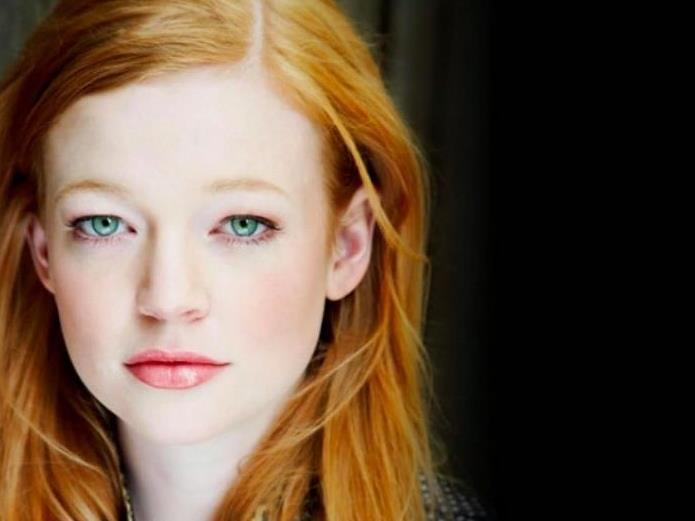Sarah Snook as Anna in The Beautiful Lie
For Alice Bell Tolstoy’s classic novel Anna Karenina was ‘a gift’. For years she had been urged to read it by television producer John Edwards for years, screenwriter Bell loved the drama from the moment she read the first page. She started a modernised television adaptation soon after, and the result – six-part drama The Beautiful Lie – is currently airing on ABC.
Bell’s three most recent gigs – The Slap, Puberty Blues, and now The Beautiful Lie – are all adaptations of books. Making adaptations is not her career focus but she is part of a Zeitgeist that has rebranded what used to be seen as a lack of orginality as reappropriation, mash-up and intertextuality, a generation where marketing the known drives artistic product.
‘It’s just where we’re at now, worldwide,’ she said.
The ease of reappropriating via digital media has changed our attitudes to originality. American photographer Richard Prince had captured the art world’s attention by recycling Instagram screenshots as his own art. He is one of many artists crowd-sourcing ideas from Instagram and claiming them as artworks.
Filmmakers and musicians are under particular pressure to recycle material. TV networks embrace adapted projects because the costly medium benefits from green lighting proven concepts with pre-existing fan bases. ‘You’re bringing an in-built audience to a project,’ said Bell.
Similarly, audiences find comfort in the familiarity of cover songs. Singer-songwriter Nadine Budge said sharing a well-known song is a bonding experience: ‘It’s inclusive. It invites people to join in.’
The front woman of original alt-country band The Stetson Family, Budge said repetition is a solace in music, which is why fans return to see bands week after week. ‘Music is out there to be listened to, and played, over and over,’ she said.
Unlike other art forms, music copyright allows live musicians to cover one another’s songs. No other art form allows such regurgitation. ‘You’re not going to go out and “cover” somebody else’s stand-up comedy routine,’ Budge said.
But even musicians’ covers depend on the artists’ capacity to bring something new to the work. When The Stetson Family included Bob Dylan’s Billy on their recent album True North – they’re not trying to imitate, ‘we’re trying to interpret’.
There’s an undeniable weight of expectation that comes with interpretation of any great artwork. Audience members often approach Budge after gigs, to offer their critique of a cover song. ‘That’s why you have to add your own voice to it – because it’s going to be scrutinised a lot more [than an original].’
Musician Adalita, who was part of a quartet that recently performed Patti Smith’s iconic album Horses as part of Melbourne Festival, said it was important to resist the pressure of being compared to the original.
‘You can’t replicate the original, there’s no point, so you just do it your own way,’ she said. ‘Forget that you’re doing a tribute, you’re just singing great songs by this great woman,’ she said.
Gearing up to record her third original solo album, Adalita enjoys the occasional escape of cover songs. ‘I love doing covers, it’s so refreshing to walk away from my own stuff,’ she said.
Like a visual artist sketching the masters she also sees learning covers as valuable training. ‘Doing covers makes me better as an artist.’
In fact, imitation is a pervasive and practical learning tool. Film and television lecturer Sandra Sciberras said studying and referencing others’ work is ‘crucial’ in all art forms. ‘As a teaching tool, there’s nothing better than dissecting a film and talking about why we believe a filmmaker’s made certain choices,’ she said.
Sciberras, who supervises Master of Film and Television students at the Victorian College of the Arts, pointed out the intangibility of originality. In cinema, she said, imitation is everywhere: ‘In every film, I see influences from the past.’
VCA students regularly reinterpret the techniques and tropes of established filmmakers in the creation of their own films. Explicit homage isn’t common, but student films often carry a ‘similar tone’ to that of their favourite directors. ‘It becomes a process of finding your own voice as a filmmaker,’ Sciberras said.
Ultimately, though, most artists will dream of creating work that is neither adaptation nor homage.
‘As much as I might be influenced by others I actually don’t want to sound like anyone else,’ said Budge, who plays occasional covers but mostly sings original work.
‘Writers will always be attracted to telling their own stories,’ said Bell, who adds that nothing excites an audience like a truly original work that makes them ‘feel like they’ve discovered something’.
No matter how many homages she sees, Sciberras agrees that the drive to originality is profound. As each annual cohort of student filmmakers graduates, no two resulting films are ever fully alike. She believes every artwork is uniquely imbued with the artist’s voice: ‘Who they are as human beings, as people, I can see that in the work. That to me is original”.





